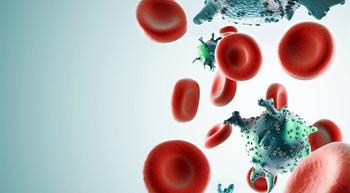
Zejula May Improve Survival in Certain Ovarian Cancer Subgroups
Progression-free survival improved with Zejula compared with placebo in patients with BRCA-mutated ovarian cancer with no new safety signals.
Patients with BRCA-mutated ovarian cancer who underwent maintenance therapy with Zejula (niraparib) had significantly improved progression-free survival compared with those who received placebo, according to newly presented research.
“Patients with BRCA-mutated ovarian cancer derived a significant progression-free survival benefit from (Zejula) maintenance treatment across all three trials in first-line and recurrent settings after response to platinum-based chemotherapy,” said Dr. Antonio Gonzalez Martin, co-director of the department of medical oncology at Clinica Universidad de Navarra in Spain and president of the Spanish Ovarian Cancer Group (GEICO), during the poster presentation at the 2021 American Society of Clinical Oncology (ASCO) Annual Meeting.
Researchers assessed the efficacy and safety of Zejula compared with placebo in patients with BRCA mutated ovarian cancer from three trials: ENGOT-OV16/NOVA (203 patients), PRIMA/ENGOT-OV26/GOG-3012 (223 patients) and NORA (100 patients).
“BRCA mutations occur in approximately 20% to 25% of patients with epithelial ovarian cancer and are associated with improved outcomes in comparison with patients with BRCA wild-type ovarian cancer,” Gonzalez Marin said. “(Zejula) has shown efficacy in tumors with and without BRCA mutations, and the efficacy and safety of (Zejula) in patients with BRCA-mutated ovarian cancer was assessed in the PRIMA, NOVA and NORA trials.”
In particular, patients in the PRIMA trial had newly diagnosed advanced ovarian cancer and responded to first-line platinum-based chemotherapy. Patients in the ENGOT-OV16/NOVA and NORA trials had platinum-sensitive, recurrent ovarian cancer.
Of the 526 patients in all three trials, the most common mutation was in BRCA1, accounting for 60.6% to 80% of BRCA mutations.
Zejula derived a significant progression-free survival (time during and after treatment when the patient lives without disease progression) benefit compared with placebo in patients with BRCA mutations from all three trials. No differences were observed in the PRIMA trial in patients with BRCA1 and BRCA2 mutations.
Hematological side effects of any severity emerging from treatment occurred in at least 20% of patients assigned Zejula. This was also seen for nonhematological side effects from the treatment of any grade.
“The most common treatment-emergent (side effects) of any grade were thrombocytopenia (low blood platelet count), anemia, neutropenia (low neutrophil counts) and nausea across all three trials,” Gonzalez Martin said during the presentation. “The most common (severe or life-threatening) hematological treatment-emergent (side effects) were thrombocytopenia, anemia and neutropenia.”
For nonhematological treatment-emergent side effects, the most common of any severity included nausea, constipation and fatigue, all of which were mainly minor, Gonzalez Martin said.
“Importantly, no new safety signals were identified,” Gonzales Martin concluded.
For more news on cancer updates, research and education, don’t forget to




